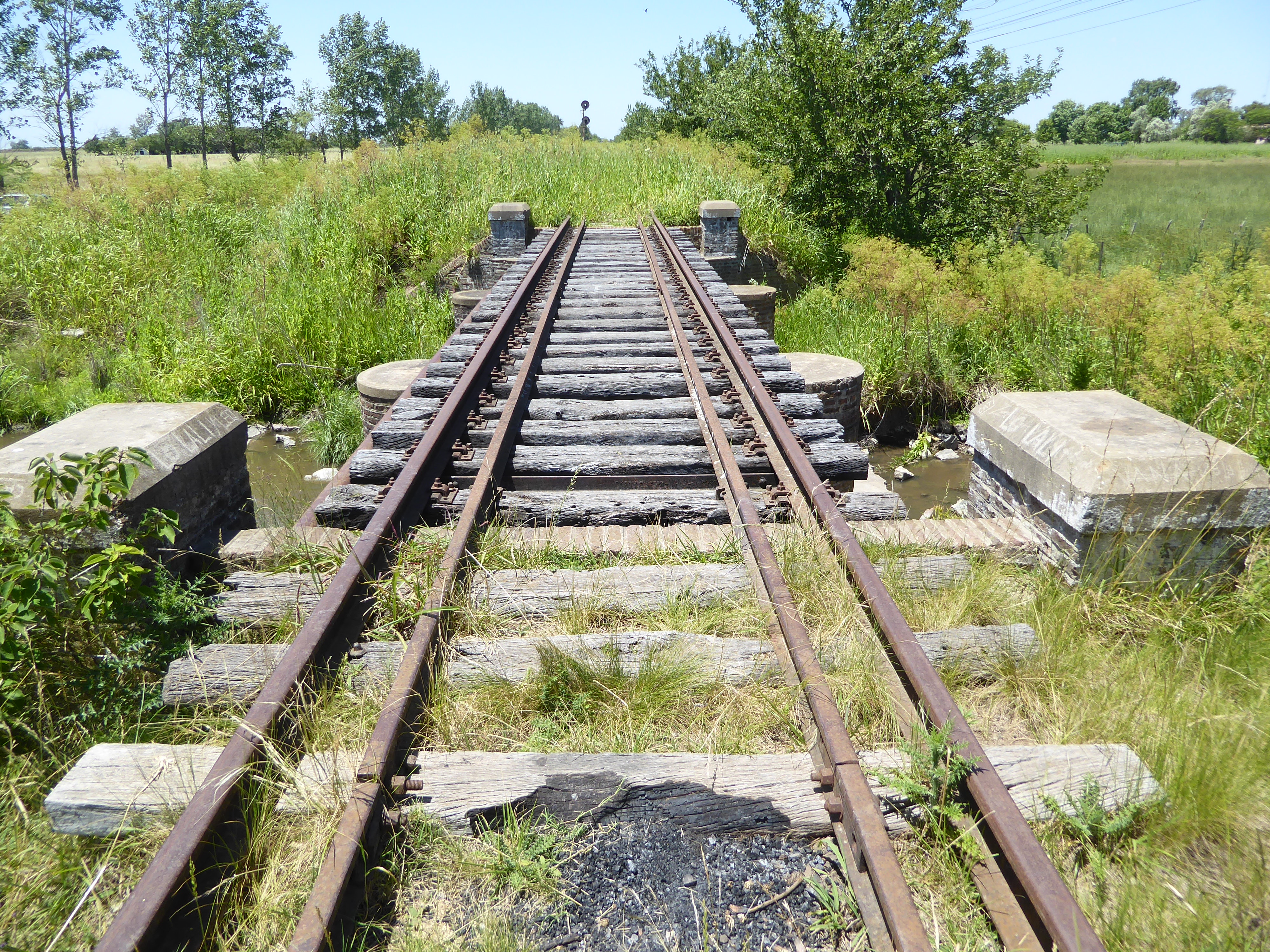
Tired of concrete? Want to see the pampa and a couple of its small towns?
Such an ordinary picture, yet so expressive. We're only an hour's drive west of Pilar, at the edge of metro Buenos Aires.
It’s an abandoned line of the Argentine Central. This was never the main line to Rosario; instead it was a branch parallel to and south of it.
A New Englander named William Wheelwright developed the British-funded Pacific Steam Navigation System, which operated the first steamships “sailing” between Chile and Europe (yes, via the Straits of Magellan). Wheelwright hoped to simplify travel by building a railroad across the Andes. He failed in this but settled for building the British-funded Argentine Central, which opened in the 1860s and was abandoned in the 1980s. The Vagues station became into a museum. Closed today. Anyway, there are no locomotives. Rats.
Once, however, this was a junction with its own marshaling yard.
What's replaced the railroad? Long-haul trucking.
Where do you think the scale came from? You have one guess: don't blow it.
What else on a British-owned railroad? Henry Pooley and Sons, based at Liverpool's Albion Foundry, was in its day the world's biggest maker of scales.
Here's another station, Duggan, 20 miles farther west.
Why the disc? Because the building is now an agricultural school in the heart of the former agricultural empire of the Duggan brothers, Irish immigrants of the 19th century. They did all right: one of them married Trillia Hinds, an American girl from Huntsville, Alabama. She did all right, too; after her Irish husband died, she became the second Lady Curzon. Very, very English.
So much wealth from these grasslands.
The open range was eventually fenced, even at creeks.
Cattle still graze, but most of the land is in crops, in this case hay in round bales.
Wheat.
Corn—maize if you're particular.
Soybeans.
Here's how it's done.
PLA is an Argentine manufacturer based west of Rosario. It also exports widely, including to the United States. This planter is designed to be hauled down highways but then to rotate 90 degrees on its own power, settle down, and go to work. Your friends at YouTube can show you the beast in action.
Competition.
Without today’s equipment, the Duggans hired 2,000 workers and set up a town near the railroad station. The names of both were probably never in doubt.
A Catholic church is the most impressive building in town.
Profile.
A model of simplicity until you start noticing details.
Farm owners here today don't want, let alone need, 2,000 employees, so the town of Duggan has gradually shifted to second homes for porteños who want a breath of fresh air on the weekend. On a weekday you'll have trouble finding even a hundred people in town.
Nice.
The local recreation center survives. Its namesake, Hipolito Vieytes (1762-1815), was a politician and businessman from nearby San Antonio de Areco who conveniently died exactly a century before the club opened. The original club members, by the way, were descended from many nationalities, but none were Irish. The Irish had their own club.
Gridded streets and a moribund commercial district.
You can see why: we're only an hour's drive and a bit from the Pilar Walmart, so people coming out for the weekend can stop here and load up with whatever they need.
Omigod: we have to take plastic bags from a roll. Maybe we can find somebody who knows how you can open the damned things without having to lick your fingers.
Outside of Duggan, there are still signs of old homesteads.
Too bad that fencing makes it difficult to poke around for house foundations.
If people in Duggan forget to buy a loaf of bread they'll head to San Antonio de Areco, 10 miles away and with about 20,000 people. It's a tourist magnet, especially with its annual gaucho festival, which we've contrived to miss. (The distances are in kilometers.)
The name of San Antonio de Areco comes from the river, the Areco. The bridge, from 1857, is now a national historical monument.
Downstream, there's a diversion dam.
The terraces are modern and replace a mill.
Voila! The town is laid out with a grid as good as anything the American Midwest can offer. A couple of blocks south of the river you can see a plaza with a church and a two-story building. There aren't many in town even now.
A monument to the mill.
Antique dealers hint at the importance of visitors.
Here's that two-story building on the plaza. Of course it's a bank.
The form seems to have been contagious.
Here's the church on the plaza.
Interior: lots of marble and gold.
Courtyard of the town office.
A house converted to a small hotel.
The main room has a view into a deep yard.
Have a seat.